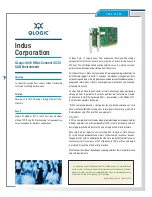
OneWireless Adapter
Honeywell Documentation
Rev A2
2 November 2010
Professional Installation Guide
XXXXXXXXX
Page 13 of 20
9 Approved
Antenna
Types/Gains
Table 4 – Approved Antenna Types/Gains
Antenna
Type
Antenna
Application
Manufacturer
Manufacturer
Part Number
Honeywell
Part Number
Beam
Width
Peak
Gain
(dBi)
Freq.
(GHz)
Agency
Compliance
Omni
(integral)
Point to
Multi-Point
CENTURION
WCP2400-
MMCX4
50053590-001 Omni 2.5
2.4
FCC, IC,
ETSI
The antenna impedance is 50 ohms.
10 Equivalent Isotropically Radiated Power (EIRP)
In radio communication systems, Equivalent Isotropically Radiated Power (EIRP) or, alternatively, Effective Isotropic
Radiated Power, is the amount of power that would have to be emitted by an isotropic antenna (that evenly distributes power in
all directions and is a theoretical construct) to produce the peak power density observed in the direction of maximum antenna
gain. EIRP can take into account the losses in transmission line and connectors and includes the gain of the antenna. The
EIRP is often stated in terms of decibels over a reference power level that would be the power emitted by an isotropic radiator
with an equivalent signal strength. The EIRP allows making comparisons between different emitters regardless of type, size or
form. From the EIRP, and with knowledge of a real antenna's gain, it is possible to calculate real power and field strength
values.
EIRP(dBm) = Radio TX Power (dBm) – Cable Loss (dB) + Antenna Gain(dBi)
Antenna gain is expressed relative to a (theoretical) isotropic reference antenna (dBi).





































